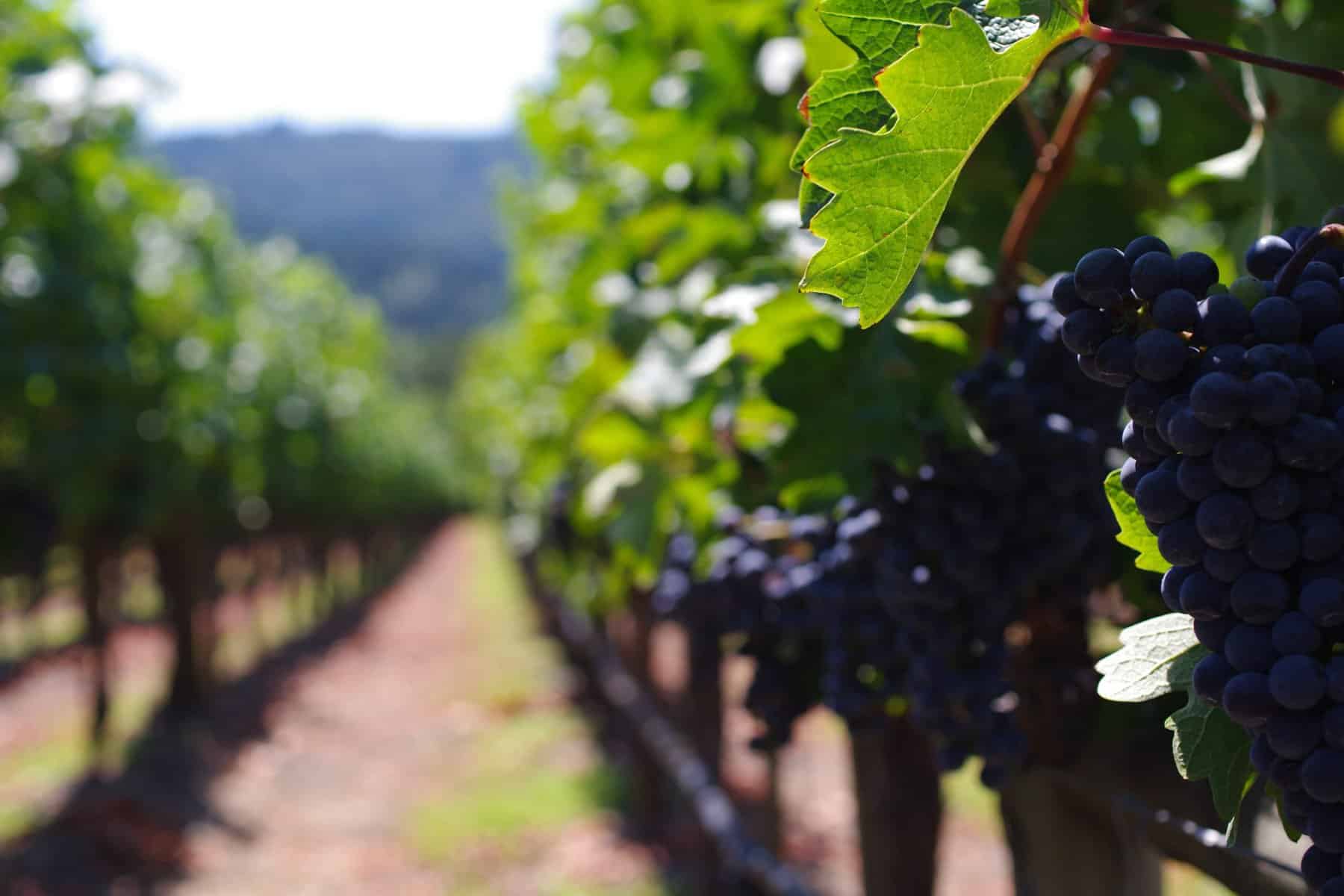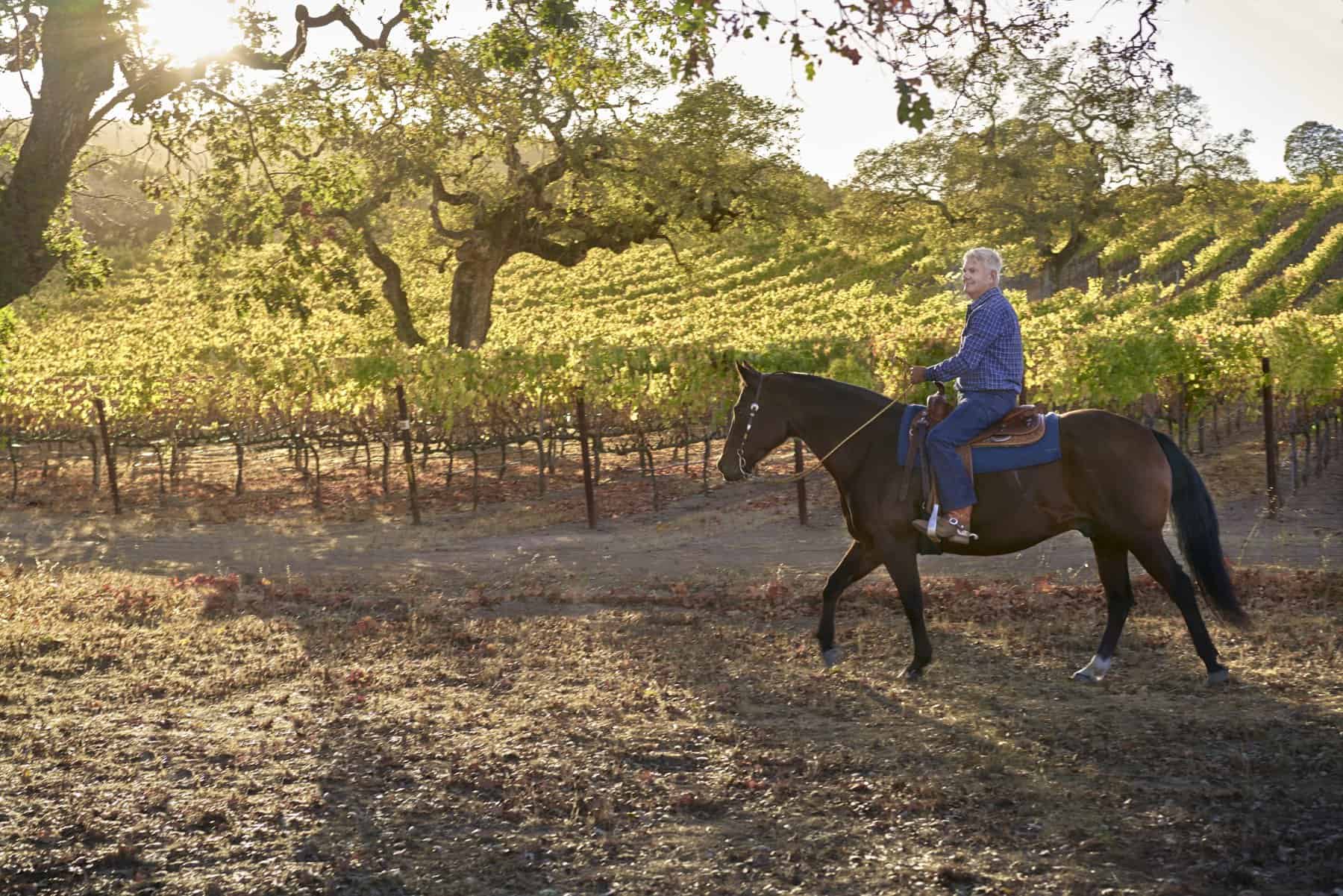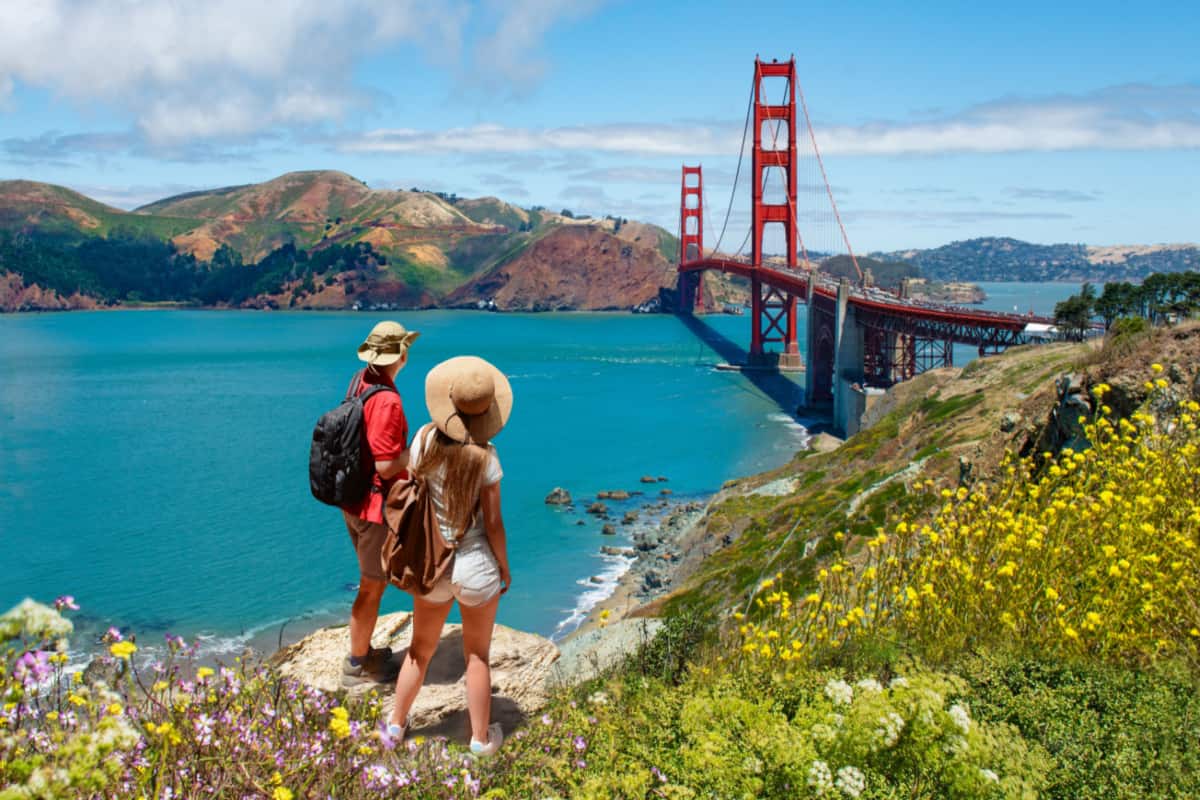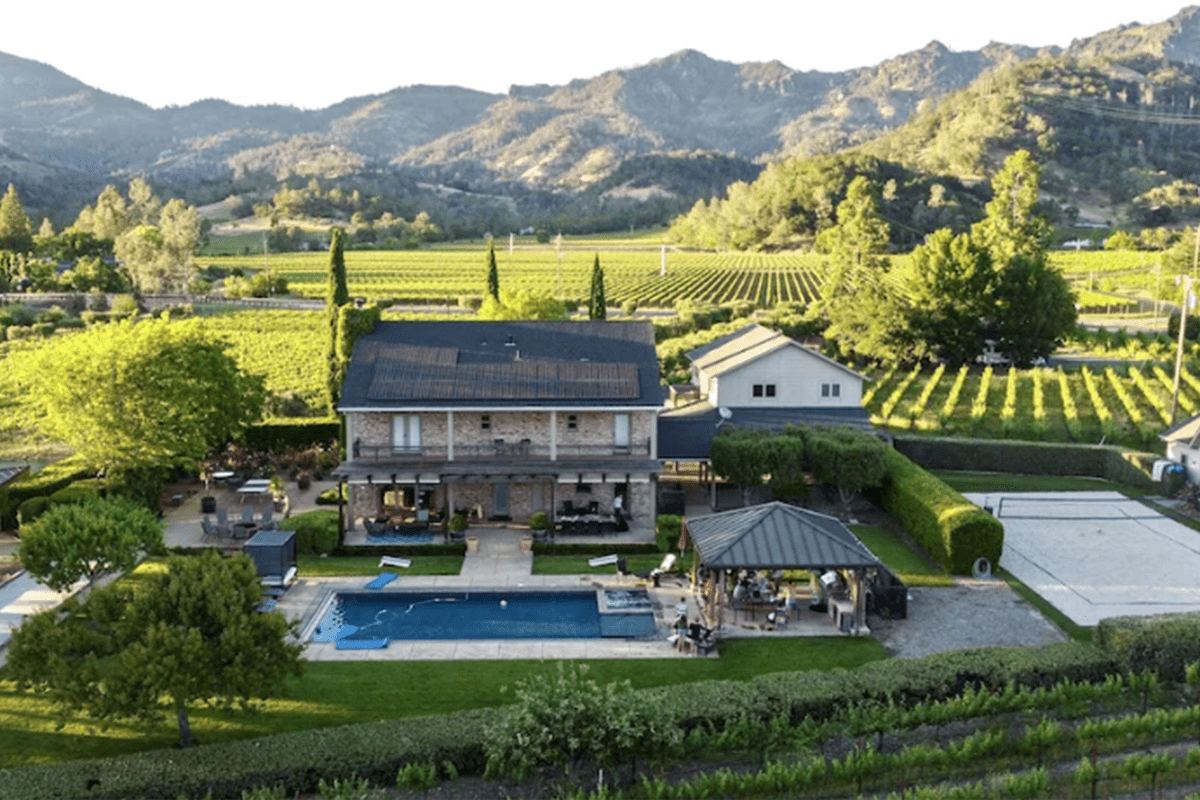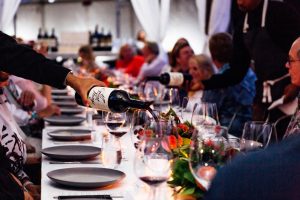From Shopping Aisle to Vineyard Row
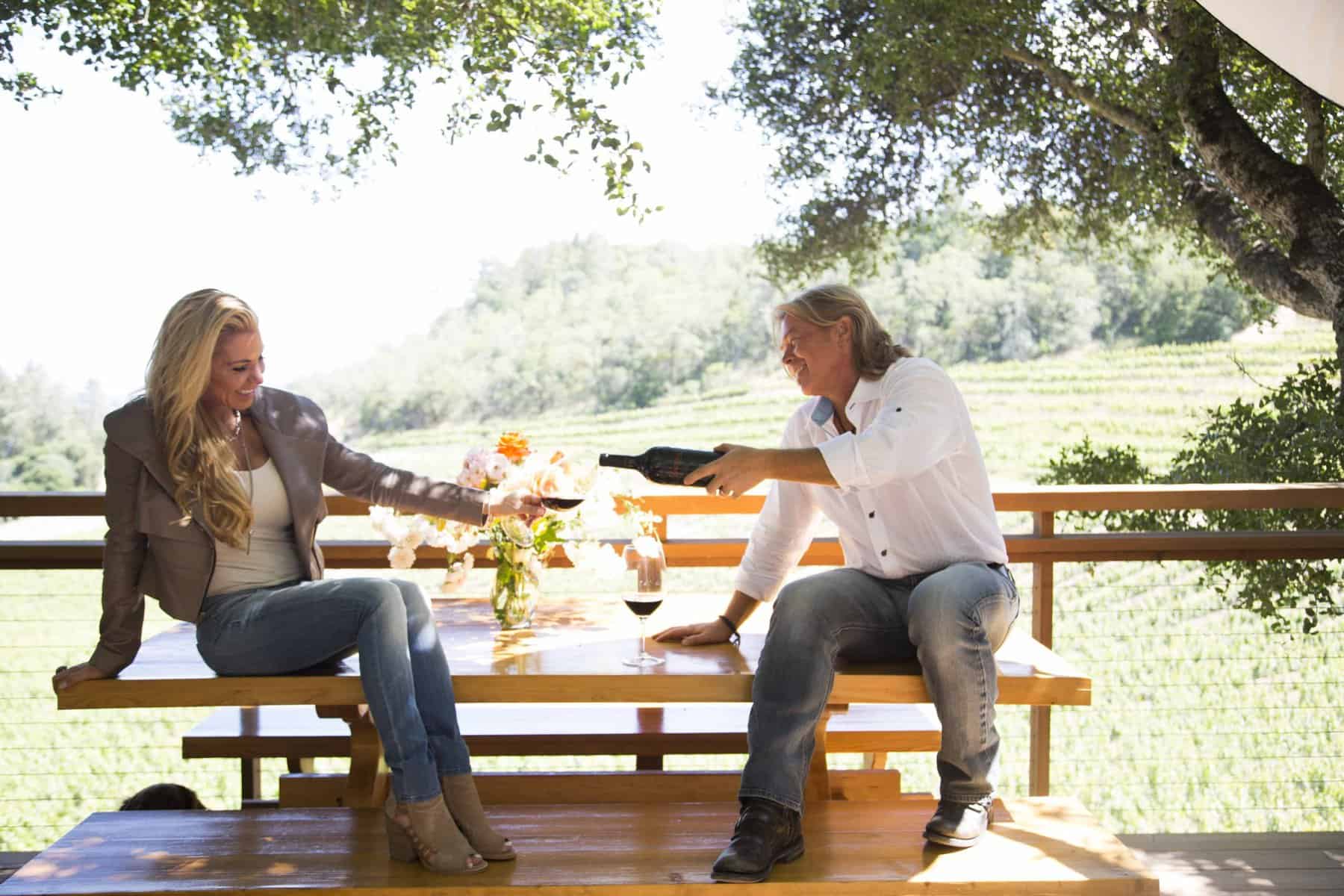
By Finer Things Contributors
This trim, taut, entrepreneurial Type-A couple represents contradiction personified—driven urban-centric personalities offset by a genuine attraction to the rural calm of the Napa countryside.
With successful business backgrounds rooted in the Best Buy principles of mass retailing, where volume, distribution, and best price determine success, they have now committed themselves to an opposing strategy of building a wine-making enterprise– the 53-acre Fantesca Estate & Winery— based on “smallness,” devotion to quality, obsession about brand experience, and adherence to premium price.
As they complete the journey from shopping aisle to vineyard row, Susan and Duane Hoff have rejected and defied labeling as prototypically-wealthy wine country interlopers as they continue their determined quest to build generational legacies for their family and wine, burnished by connoisseurship, passion, and the patina that can only come with time and patience.
About the Hoffs
(Susan): I worked my way through college at a family business, the Sound of Music retail chain, renamed Best Buy in 1984. Once I graduated, I became their go-to communications person and literally climbed the ladder until I became the Senior Vice President and Chief Communications Officer managing Investor Relations, Public Relations, Public Affairs, and Internal Communications. Then I “retired” to get my Master’s degree in International Business from the University of Bordeaux’s Business School. I remained involved with Best Buy until 2013, chairing the company’s Children’s Foundation, which I also founded.
(Duane): When we started dating in college, Susan was working nights and weekends at one of the Sound of Music stereo shops where she also wrote the store newsletter. She had an original Apple computer, and because I was a faster typist, I would help her type it up, so we could get to the bar sooner!
(Duane): There were four stores in 1985 when we started dating; 12 in 1988 when we got married; and 50 by 1991 when our son Taylor was born, which is when I also joined the company. After that, it grew in leaps and bounds, hitting thresholds of 400 and then 1,000 stores in quick succession. At peak, we were adding 120 stores a year.
On Acquiring a Winery
(Duane): I was Vice President of Business Development and Strategy at Best Buy, on the road searching for new business opportunities for the company.
If I had a negotiation in San Francisco, I would always plan the meetings for a Friday or a Monday so that we could sneak away for the weekend and visit Napa. That’s how we fell in love with the area.
(Susan): We (jokingly) bought the winery for Valentine’s Day–closed on it [on] February 13th, 2004.
At that time, Duane was running it while I remained in Minneapolis working for Best Buy. I’m traveling for business. He’s traveling back to see me. We’re trying to get the winery together. Finally, Duane said, “Should I get someone to run the winery? Because last time I checked, you and I were married!” Ultimately, it came to the point where I really wanted our family to be together here in California.
(Duane): After we bought the winery, and as we were getting ready to move, I said to Susan “You know, when Cortez got to the New World, he burned the ships so there would be no mutiny.”
Her reply? “You ain’t burning my ship!”
(Susan): When seeking advice on a career change, my dad’s response to the move was “Can it wait?” He was the founder and Chairman of the Board. He appreciated that I could get things done within the company and I think he always anticipated that I would remain at Best Buy and continue climbing the executive ladder.
(Duane): Initially, we approached Abe Schoener from the Scholium Project to assess the property. I said, “Abe, we need somebody to tell us all the reasons we shouldn’t do it. I can talk myself into it. You need to talk me out of it.”
We went into the cave and pulled some wine out of the barrel. Abe sniffed, tasted, swirled it in his mouth, and he just looked up and started nodding before he even swallowed it. Right then, I said to myself, “I think we just bought ourselves a winery!”
The fruit was there. The vineyard was there. It had good dirt. And it also had a secluded home so if we lived there, we could be close to the business. Being able to control the winemaking as well as the farming was particularly attractive to us.
On Their Philosophy of Owning and Running a Winery
(Duane): We started by asking for advice from locals whom we respected. We were referred to Cary Gott who is now the winemaker for Davis Estates and also helps struggling wineries get back on their feet. He had been the president of Seagram’s wine division, so he understood how to speak “corporate” to us, which was incredibly helpful. We hired Cary to help us write and implement a business plan for what that winery would look like—a small producer of very high-end wines. That was completely different from what we grew up with at Best Buy–stack it on the aisle end cap and sell as many as you can.
If you’re selling 100,000 cases of wine, your life is all about getting on a plane and going to every corner of the country. We didn’t want to do that.
(Duane): We want to make the very best wine we can, regardless of cost. It’s an expensive way to do business, but when you have an outstanding winemaker, it’s the right thing to do. What we want to create is an amazing wine and an incredible experience for our members, those on our allocation list.
Let’s face it, these are very expensive wines so when someone opens that bottle, they want it to be special–a combination of elements–the winemaking itself, the extraordinary fruit, having a supremely-talented winemaker, being willing to leave half of it out in order to achieve the very best blend. It’s also the label, the box, the corks that we use. All of these elements, in combination, deliver an experience that says, “This is something special, and when we open this tonight to celebrate, this will be a memorable moment.”
(Duane): The established model for creating a premium, cult wine is to get a 100-point score and make it very difficult to gain entrance to the winery—a scarcity and mystique strategy.
The new model is built on creating a memorable experience. Our intent isn’t to make 100,000 cases of wine. It’s to make 5,000 cases of the finest wine we can, and then to have this amazing experience at the winery where people feel really welcome and can get close to the wine—to experience it as we do, as winemakers and owners.
(Duane): Even though we’re permitted for 30,000 gallons, our plan is to produce 5,000 cases of the very best wine across four categories—cabernet, chardonnay, pinot, and a blend—no more than 1,500 cases of each. At that threshold, every vineyard is a distinct color, and it’s the colors that make the painting.
If you start to muddy the colors, you begin to homogenize the wine. That’s the threshold we will never cross.
On the Pursuit of Heidi Barrett
(Susan): Fantesca is a character from the Italian Commedia dell’Arte. She was the only female in a cast of male characters. At a time in England, when only men were allowed on stage, the Italians said, “Forget that. We’re going to have the best and most beautiful woman on stage as the sage communicator; someone sexy, smart, and unpretentious.”
Get The Finer Life
Our Sunday email has tips and content you will love – exclusively for our subscribers.
"*" indicates required fields
Our property had this really rich female heritage so we thought “If we could get Heidi Barrett, it would be incredible to see what this winery is really capable of.” She has this remarkable finesse for making wine. We’ve loved her wines from the beginning of time, and it was a dream come true to be able to make wine with her.
(Duane): In 2006, when Heidi left Screaming Eagle everybody in the Valley pursued her to be their winemaker, including us.
One of the lessons that Susan and I learned at Best Buy was, “If you want something special from a vendor, Apple for example, you don’t tell Apple how great it’s going to be for Best Buy; you have to tell Apple what you can do for them that they can’t do for themselves.” When we sat down with Heidi, instead of telling her how great it would be for Fantesca if she was our winemaker, our whole approach was, “We have great communications and marketing backgrounds. What can we help you with?”
(Duane): It just so happened she had a problem with the internet–when people searched her name, they weren’t finding her wine. They were finding winery projects she worked on in years gone by that were still using her name. We helped her fix the problem.
The rest is history. Heidi became our winemaker in 2008.
On Observations About the Wine Business
(Duane): What we initially saw, given our marketing and public relations backgrounds, was that there were wines in the Valley that were beautifully crafted but they couldn’t tell their story. Their challenge was conveying a sense of place and creating experiences that bond the customer to the winery.
(Duane): Like everyone else, we had to face the financial crisis in 2008 which caused us to refocus on selling wine direct to the consumer. We weren’t worried because we could already see that the best solution was to double down and focus on creating a great experience at the winery so that we could sell more wine direct.
It was really a matter of “Necessity being the mother of invention.” When you realize that you’re not getting the bang for your buck from selling through the traditional “three tier” system, you really have to refocus on the fundamentals.
On What Drives Them
(Duane): Stephen Covey asked the question, “What’s your true north? What things are essential and important in your life? Are you putting your effort and your investment of time and energy into aligning your values with how you live your life?”
Our collective true north is our marriage, our family, our children, and creating an exceptional winery – something we’re really proud of – something that is reflective of our efforts, above and beyond what we achieved at Best Buy.
(Susan): We want to make great wines.
And we want the winery to be something of substance, something memorable, and something that will live in our family for a long time. It may sound like a cliché, but if you think of yourself as a steward of the land and the wines, what you’re building is something that’s sustainable for your family for multiple generations—creating a heritage, just as the great wineries of France and Italy have done.
On the Influences in their Life & Business
(Duane): I’ve really admired the Staglin family for a number of reasons–the quality of their wine, the way they give back to the community, and the way they turned personal adversity into charitable triumph.
(Susan): For me, it’s Mike Grgich because of the great relationship that he shares with his daughter. Even though she does her own thing, they love working together. He is an authentic Napa Valley community and industry pioneer. I see something of my own life in that story–being able to work with my father at Best Buy and then attempting winemaking excellence with my husband.
(Susan): I also look up to Heidi Barrett. Heidi is an extraordinary example of a self-made, successful woman in the wine industry. She has an unmatchable palate and truly encompasses what every winemaker wishes they could accomplish. And she doesn’t take credit for any of that!
(Duane): I admire what Erik Ackerman is doing at Jackson Family Wines. Erik is responsible for the company’s luxury brands and I think he’s done an amazing job of creating world-class experiences for their guests. I really look up to him.
On the Seminal Movements in Life
(Susan): My 30-year career at Best Buy stands out—starting from scratch, making my way, becoming a senior vice president, and rapidly growing the communications function in parallel with the company’s growth.
I learned if you work hard for the company, you will be rewarded by the company accordingly. It’s not all about you. It’s about the company, first and foremost. The other event that had an impact on my life was getting my MBA 20 years after I graduated from college.
Among other things, it taught me that it doesn’t matter how old you are, you can always go back and get what you want if you’re willing to put in the effort.
(Duane): I actually grew up in the country outside of a town of 5,000. I thought I wanted to be an attorney at the time and felt like I needed to go to a better school.
So I transferred to the University of Minnesota with a campus of 50,000 students. When I got to Minneapolis I realized even though I was a country kid, from a small town, I could hold my own. It gave me tremendous confidence to realize that if you work hard, remain diligent, and put in the effort, it’s a level playing field.
This interview was conducted by Alf Nucifora, founder of Leading Wineries of Napa and The Luxury Marketing Council of San Francisco. This article was edited and formatted by Franki Hanke.
Next, read our other wineries interviews with winemaker of Etude Wines and founder of Sinegal Estate.
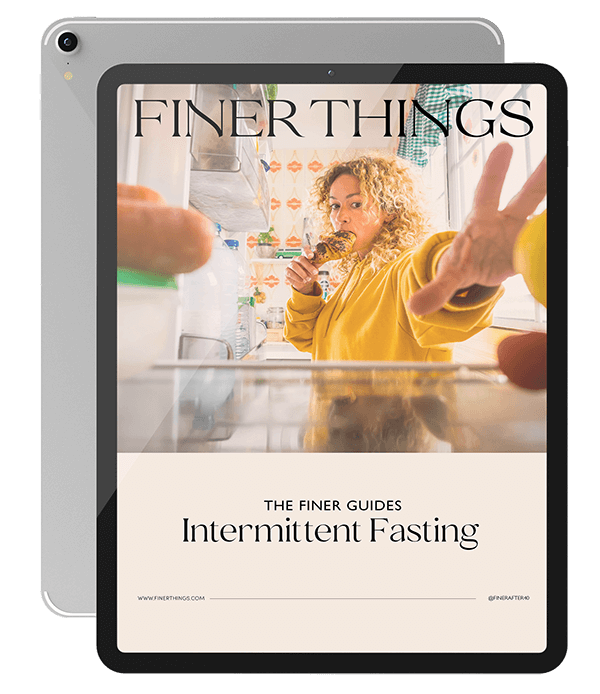
Want a Free Guide?
You will receive our free 19-page guide and access to our exclusive content, private invitations, and tips you’ll love.
"*" indicates required fields
Facebook Group

